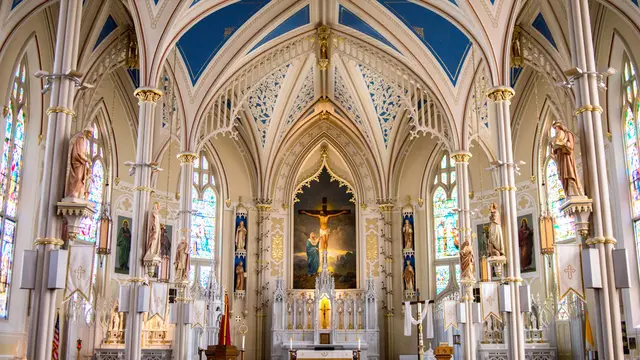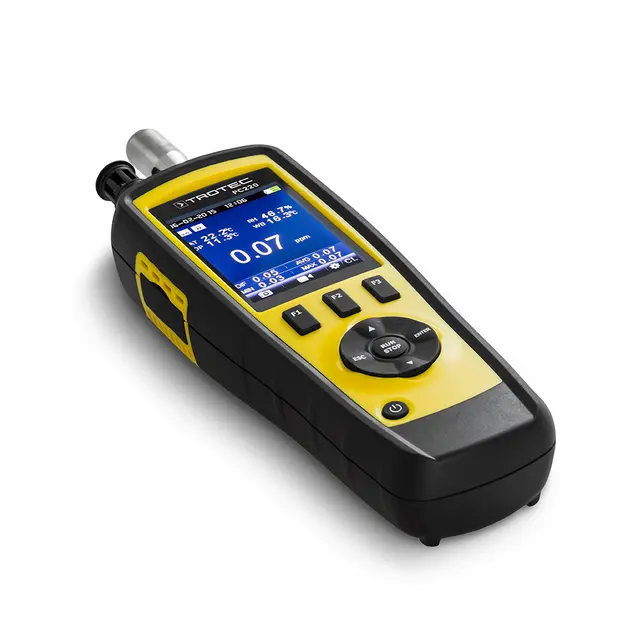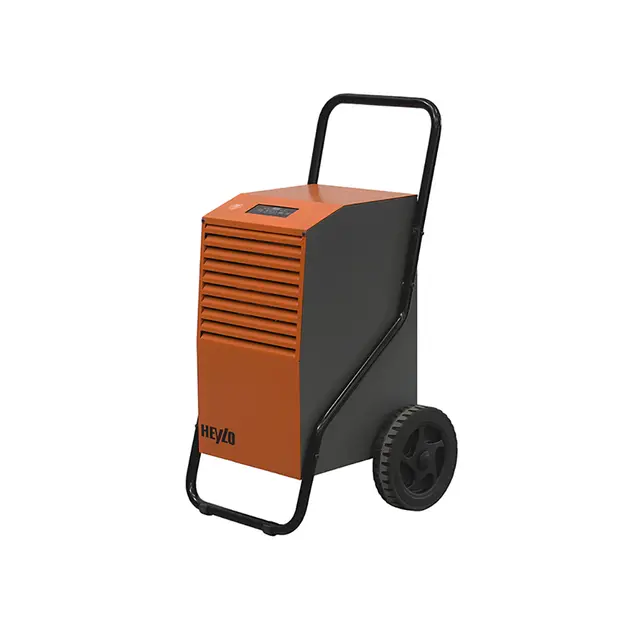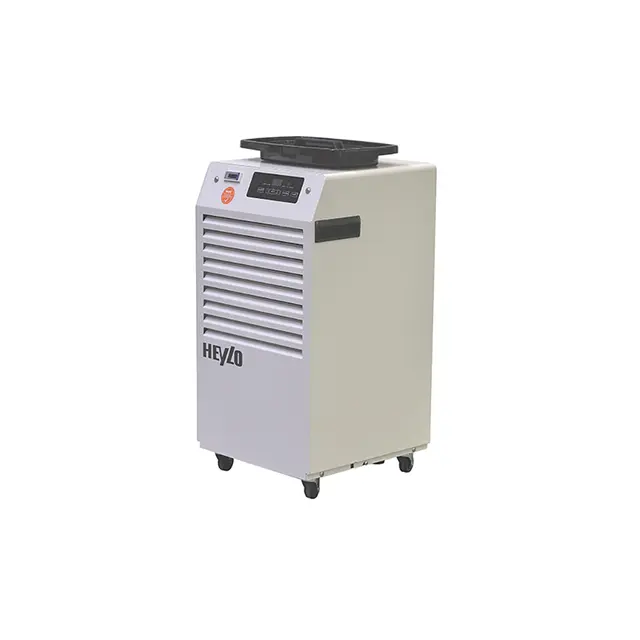Gentle drying strategies for historic churches

- Home
- Insights
- Humidity control and drying insights
- Gentle drying strategies for historic churches
In this article, we’ll be focussing on the unique materials and construction types that need to be considered during the water damage restoration of churches and historic buildings. You’ll also learn which technologies should be used (and when) to minimise further damage and maximise efficiency.
Europe’s rich history means that its towns, cities and villages are peppered with ancient churches and cathedrals, many of which have enormous cultural significance. Because of this, they are usually ‘listed’ to keep them as authentic as possible while the world changes around them.
The structural features of these historical churches have stood the test of time. However, their traditional building materials and methods, and the way they have aged, are particularly sensitive to temperature and humidity. As a result, dramatic changes to their environment, such as water damage, can be devastating.
Why are churches so sensitive to temperature and humidity?
Churches and other older buildings contain structural and decorative elements that are made from hygroscopic materials that readily attract or absorb water from their surroundings. These include antique or irreplaceable items, including wooden pews and benches, carvings, lecterns, fabric decorations and lime plaster walls with ornate architraves.
You are also likely to find pipe organs – a centrepiece for many churches. These are very complex instruments, and the impressive sound they make relies on the air vibrating at a certain frequency determined by the density of the air – which in turn, is affected by humidity and temperature.
In the case of water damage, both temperature and humidity will change significantly. This is a disaster for the sensitive environment inside old churches. If left too long, dried too soon – or without due care and attention to detail – hundreds, if not thousands of years of history can be lost to warping, splitting or rotting (for wooden artefacts), mould growth or crumbling of walls, and irreversible cosmetic damage to decorative items.
With the factors above taken into consideration, water damage technicians are faced with a number of challenges to overcome during the restorative drying of historical churches. However, with the right technology and the correct drying strategy, it is possible to bring a historic building back from the brink of irreversible water damage.
Best practices for drying churches
The main focus for a water damage technician should be to minimise the risk of secondary damage to the building construction and to restore the materials to a pre-loss condition in a calm and considerate manner.
Water damage technicians can use specialist water damage drying units which give them the ability to extract excess water from the fabric of a building. In normal circumstances or more modern constructions, the choice of technology would be based on restoring materials as quickly and efficiently as possible. When it comes to churches and other historic buildings, a softer, more tactical approach is required.
Avoid powerful technology until drying is stabilised
Modern adsorption drying technologies are an incredibly effective method for colder conditions and newer buildings with more difficult-to-dry construction materials such as hardwoods, dense concrete and insulation.
By flowing the damp ambient air through a desiccant material, such as a silica covered rotor, adsorption dehumidifiers can achieve relative humidity (RH) levels up to 20% lower than a more traditional refrigerant-based/condense drying system.
However, the very reasons that often make adsorption drying the best choice for modern constructions, make it the least appropriate for older buildings. Because it is so powerful and can create such dry air so quickly, adsorption drying can result in damage to hygroscopic materials such as aged wood that has become saturated with water.
During the crucial early stages of a water damage restoration project, we also recommend avoiding high-powered heating solutions such as indirect heaters. This is because the dramatic increase in temperatures could cause the vapour pressure to build rapidly inside saturated materials, leading to splitting, warping or distortion.
Solutions for a sensitive drying strategy
For more gentle dehumidification and moisture removal, condense drying is your closest ally. Condense dehumidifiers draw damp air across a refrigerated coil which cools it below its dew point. This condenses the water vapour and lowers its moisture content. The cool air is then passed across a condenser and reheated, before being returned to the room as warm, dry air.
This more gradual drying process provides a gentle, considered method of removing moisture from the ambient air and the fabric of a building.
Our Aerial AD 750 and 780-P series of condense dryers are designed to deliver high volumes of airflow, making them perfectly suited to reaching damp areas in the open spaces, high ceilings and unique layouts found in churches.
These drying solutions are also fitted with humidistats, providing the technician with a tool that enables them to gradually reduce the humidity level and help acclimate wet materials to their adjusted surroundings. As well as a way to maximise efficiency, this feature helps minimise any risk of secondary damage due to drying hygroscopic materials too quickly.
Drying in colder climates
While they offer outstanding efficiency and controlled moisture removal, condense dehumidifiers become less efficient when the temperature drops below 10°C.
In colder climates or during winter months (when flooding is most common), water damage technicians will benefit from Dantherm’s AD 935 S unit. It is renowned for its' user-friendliness, this system has built-in 1kW heating elements. This will help gently raise the temperature inside a church to a level suitable for efficient condense dehumidification.
When to apply more powerful technology
As noted above, aggressive drying methods can do more harm than good to the structure and delicate interiors of an old church. However, once condense drying has been used to bring saturated areas to a more stable level, technicians will be able to use specialist solutions to speed up the process. These include:

Every old church or building will have its own unique features and environments that will define the best approach for restorative drying. However, the information above should be considered to carry out projects with the due care needed to restore churches and other historic buildings.
For more information on the water damage restoration of old buildings and for help choosing the most appropriate drying set-up, contact our team via the form below.
Related products
Featured insights

Protecting historic build structures through drying technology.

What to do when the atmosphere becomes a hazard

Expert advice for your next project
Need help with choosing the right solution? Our team of over 100 climate control experts can assist.
You can also reach out or join the discussion on our Social Media. Check out our LinkedIn page.











